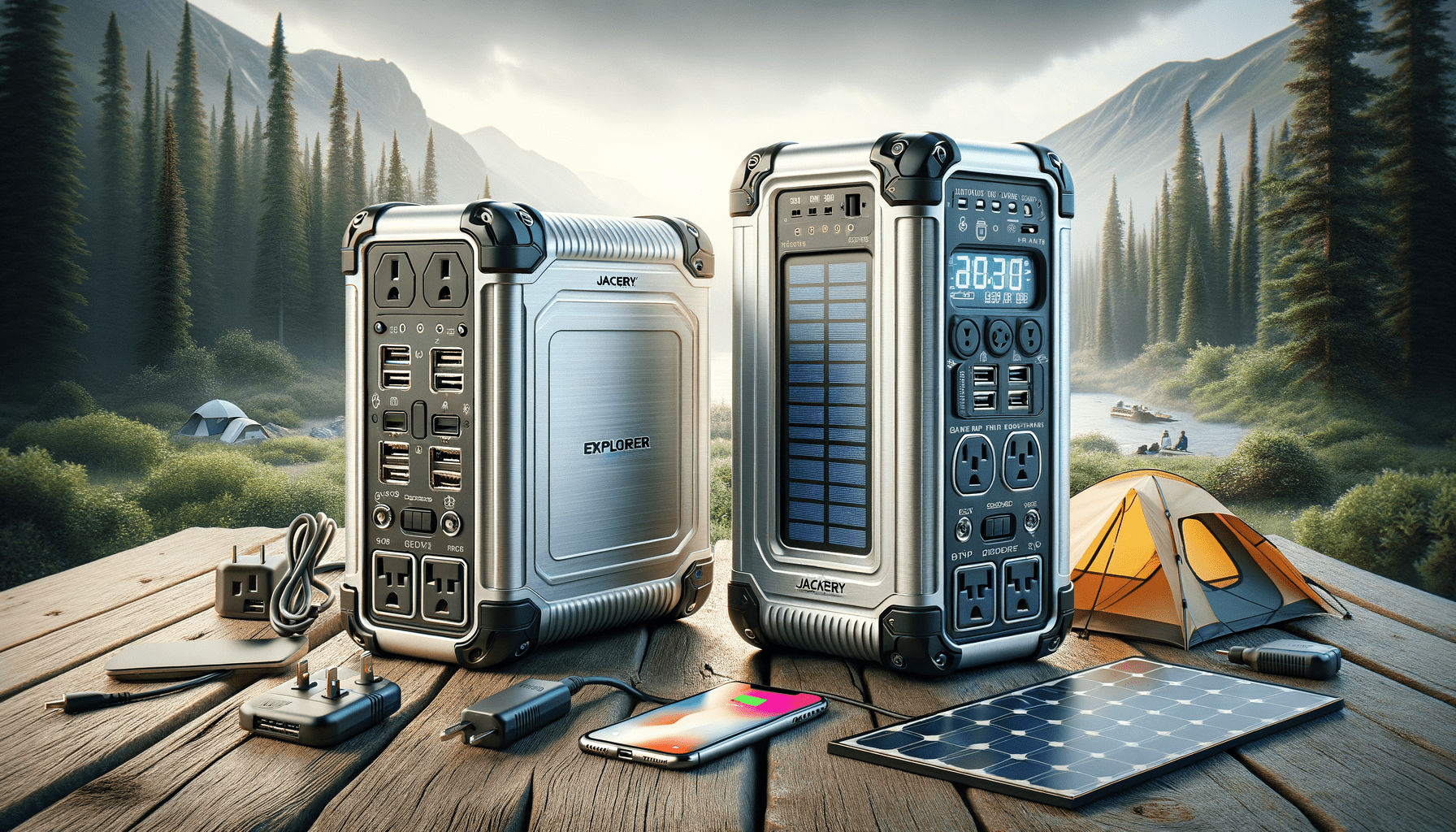If you’re in the market for a reliable portable power station, chances are you’ve come across the Jackery brand. Jackery has earned its reputation by producing some of the best portable power stations that cater to a wide range of energy needs. Today, we’re diving into a detailed comparison of two of their popular models: the Jackery 3000 Pro and the Jackery 500. Whether you’re planning an extended off-grid adventure or seeking dependable backup power, understanding the technical nuances of these products is crucial in making an informed decision.
Unpacking the Powerhouses: Key Features Comparison
| Feature | Jackery 3000 Pro | Jackery 500 |
|---|---|---|
| Battery Capacity | 3024Wh | 518Wh |
| Weight | 63.93 lbs | 13.3 lbs |
| Continuous Power | 3000W | 500W |
| Peak Power | Surge capability for high power devices | Surge up to 1000W |
| Charging Methods | Solar, Wall, Car | Solar, Wall, Car |
| Solar Charging Time | 6 – 7.5 hrs (with 6x100W panels) | Approx. 9.5 hrs |
| Wall Charging Time | 2.4 hrs | Approx. 7.5 hrs |
| Car Charging Time | Up to 35 hrs | Approx. 7.5 hrs |
| Safety Features | 12 Forms of Protection | BMS, Overcharge, Short-Circuit, Over-Discharge Protections |
| Temperature Tolerance | -20°C /-4°F | Varied |
| Warranty | 3 years (extendable) | 2 years (with 1-year extension option) |

Capacity and Power Output: Brawn or Flexibility?
The Jackery 3000 Pro boasts a hefty 3024Wh battery capacity and a continuous power output of 3000W, making it a heavyweight champ for powering larger appliances and multiple devices simultaneously. Ideal for extensive use in off-grid living or RVs, it’s well-suited for those who don’t want to compromise on power availability.
In contrast, the Jackery 500’s 518Wh battery offers a more nimble and travel-friendly option. Although it can’t support as many high-power devices as the 3000 Pro, its 500W output is ample for personal electronics, small appliances, and emergency backup.
Charging Speed and Methods: Fast Track vs. Steady Pace
When it comes to recharging, the Jackery 3000 Pro impresses with a wall charge time of just 2.4 hours. The solar charging capabilities are equally notable, requiring only 6 to 7.5 hours to fully charge with 6 SolarSaga 100W panels.
The Jackery 500, while not as speedy, still maintains a respectable pace, reaching full charge in around 9.5 hours from solar rays or 7.5 hours when plugged into a wall or car outlet.
Portability: Taking the Power Where You Need It
The Jackery 3000 Pro offers portability despite its significant weight, thanks to a thoughtful design that includes a pull rod and wheels. It’s a mobile power solution for when your adventures demand substantial energy reserves.
On the other hand, the Jackery 500 shines as the more portable counterpart, weighing a mere 13.3 lbs. It’s considerably easier to carry, making it a breeze to bring it to campsites, tailgates, or just to have on hand for emergencies.
Robustness and Environmental Operation
Both Jackery models are engineered to withstand various environmental conditions. The 3000 Pro’s ability to function in temperatures as low as -20°C / -4°F is notable for those in cold climates, whereas the Jackery 500, while not as extreme in its temperature tolerance, also promises reliable operation in a range of weather conditions.
Who Wins the Jackery Battle? Making the Choice
Ultimately, choosing between the Jackery 3000 Pro and the Jackery 500 hinges on your specific power needs. For heavy-duty use and those requiring quick, versatile charging options, the 3000 Pro is the way to go. If portability and convenience for lighter power needs are your top priorities, the Jackery 500 will serve you well.


Leave a Reply